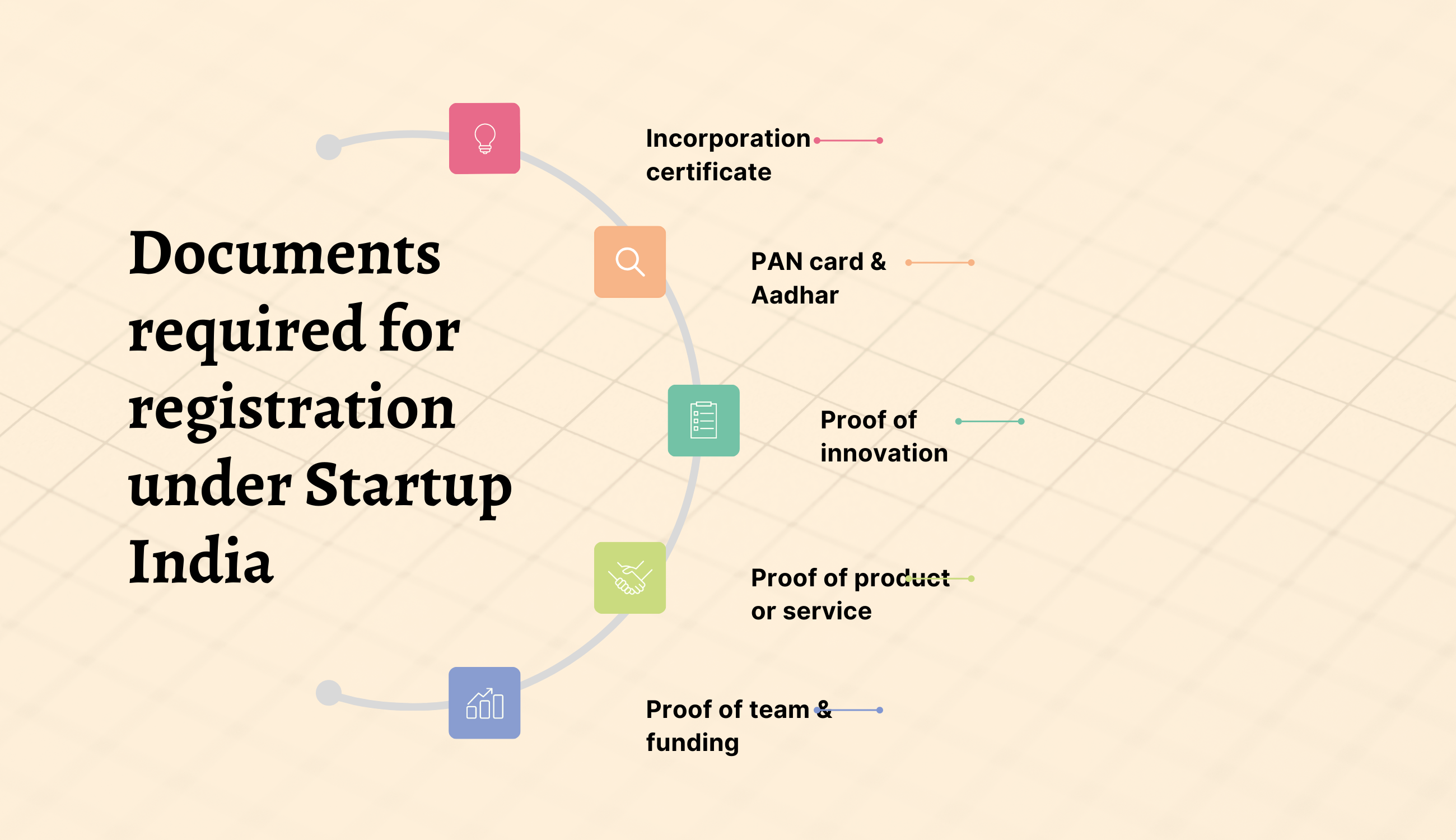Do you dream of starting your own business in India? I was in your position only a few months ago! The government has, under the Startup India project, greatly made simpler matters, which is excellent news. Today, I'm sharing my own expertise to assist you deal the Startup India admission process without hiccups.
Startup India Registration Process Step-by-Step
All the material available left me feeling overtaken when I first chose to register my business. Once I dissected it, though, it wasn't as difficult as it first looked. Allow me to guide you through every action I did to have my company formally accepted.
What is Startup India and Why Should You Register?
Before starting the registration procedure, allow me to explain why it merits your time. Launched by our government in 2016, Startup India is a flagship program. Its primary aim is to create a robust ecosystem for supporting innovation and industry all throughout India.
When I registered my startup under this program, I gained access to several benefits like:
- Tax benefits for 3 years
- Easy patent filing
- Faster exits for companies
- Self-certification compliance
- Legal support and fast-tracking of patent applications
- Government funding opportunities
These benefits of Startup India registration made a huge difference for my small business, especially in the early stages when every rupee counted!
Read also: List Of Government-supported Indian Startups
Am I Eligible for Startup India Registration?
Before I started my application, I checked if my business met the eligibility criteria. Your startup should:
- From the date of company, be under ten years old.
- Be registered as a Limited Liability Partnership, Registered Partnership Firm, or Private Limited Company
- For any of the financial years since registration, have an annual turnover not more than 100 crore.
- Be striving towards innovation, development, or improving of products, processes, or services
- Have a scalable company strategy with great potential for wealth growth and job generation
My tech solution fit perfectly into these criteria, which made the registration process straightforward.
Documents Required for Startup India Registration
Preparing my papers before start the application helped me to save a great deal of time. Here is what you should have close by:
- Certificate of Incorporation or Registration - I had my company registration certificate from the Ministry of Corporate Affairs
- PAN Card details of your business
- Director/Promoter details including their Aadhar cards
- Company address proof - I used my electricity bill for this
- Self-declaration in the format specified by DPIIT (Department for Promotion of Industry and Internal Trade)
- Recommendation letter - This is needed only if you're applying for tax benefits
- Description of your innovation - I prepared a brief write-up explaining how my product was innovative
Having all these documents required for Startup India registration organized beforehand made the process much smoother for me.
How I Completed My Startup India Registration Application
Step 1: Creating an Account on the Startup India Portal
First, I visited the official Startup India website (www.startupindia.gov.in) and clicked on "Register" to create my account. The registration was simple - I just needed to provide basic details like:
- My name
- Email address
- Phone number
- Create a password
After verifying my email and phone number, I was ready to start the application process.
Step 2: Filling the Registration Form
Once I logged in, I clicked on "Register Your Startup" and began filling out the form. The form asked for:
- Basic company details (name, incorporation date, address)
- Director/founder information
- Business sector and activity details
- Funding details (if any)
I made sure to describe my business clearly, highlighting how it was innovative and different from existing solutions.
Step 3: Uploading Required Documents
This is where those prepared documents came in handy! I uploaded:
- Company incorporation certificate
- Proof of address
- PAN card details
- Director information
The portal has clear instructions about the format and size limits for each document. Most of my files were in PDF format, which worked perfectly.
Step 4: Self-Declaration
I needed to submit a self-declaration form stating that my startup:
- Was working on innovation and development of new products/services
- Had potential for job creation
- Was not formed by splitting up an existing business
- Would not claim multiple benefits under different names
I downloaded the template from the portal, signed it, and uploaded it back.
Step 5: Submitting the Application
After reviewing all information, I submitted my application. The system generated an acknowledgment number instantly. I was surprised by how quick the process was – it took me less than an hour to complete everything!
Step 6: Recognition Certificate
The best part? I received my DPIIT recognition certificate within just 2 days! Some of my friends had to wait for about a week, but the process is generally quite fast. The certificate came as a downloadable PDF with a unique recognition number.
Advanced Benefits: Tax Exemptions Under Section 80-IAC
After getting basic recognition, I decided to apply for tax benefits under Section 80-IAC. This wa an additional step that required:
- A more detailed application
- Recommendation letter from an incubator or funding organization
- Presentation about my innovative solution
The income tax exemption for 3 years was definitely worth the extra effort for my growing business!
How to Get an Incubator Recommendation Letter
Securing an incubator recommendation was probably the most challenging part of my journey. Here's what worked for me:
- I researched government-approved incubators in my city
- Prepared a detailed business pitch
- Approached three incubators with my idea
- One incubator agreed to review my startup
- After two meetings, they provided the recommendation letter
This letter significantly strengthened my application for tax benefits.
Benefits I've Enjoyed After Startup India Registration
The benefits of Startup India registration have been game-changing for my business:
1. Financial Benefits
- Income tax exemption for 3 consecutive years
- Investment capital gains exemption
- Reduced patent filing fees - I saved almost 80% on my patent application
- Easy access to government funding - I secured a grant through the Startup India Seed Fund Scheme
2. Simplified Compliance
- Self-certification under labor and environment laws
- Fast-tracked patent examination - My patent application was processed in 18 months instead of 5-7 years
- Easier public procurement norms - This helped me secure a government contract
3. Networking and Support
- Access to Startup India Hub - I connected with mentors who provided valuable guidance
- Participation in government challenges and competitions
- Industry-academia partnerships - I collaborated with a local engineering college for R&D
4. Business Support Services
- Legal and accounting support at reduced rates
- Faster company registration process
- Access to learning and development programs
One unexpected benefit was the credibility that came with being a recognized startup. When meeting with investors, having the Startup India recognition certificate definitely gave me an edge!
Common Challenges I Faced During Registration
Not everything was smooth sailing. Here are some hurdles I encountered and how I overcame them:
Technical Glitches on the Portal
The portal sometimes had loading issues during peak hours. I found that applying early morning or late evening helped avoid these problems.
Confusion About Innovation Requirements
Initially, I wasn't sure if my business model was "innovative enough." I overcame this by clearly documenting how my solution addressed market gaps in a new way.
Read also: Fastest-growing Indian Tech Startups
Getting the Incubator Recommendation
As mentioned earlier, this was challenging. Persistence and a well-prepared pitch were key to success here.
Document Format Issues
Some of my documents were rejected because of format issues. Make sure to follow the exact specifications mentioned on the portal for each document.
Tips From My Experience That Will Help You
Based on my journey, here are some practical tips:
- Start with complete documentation - Having all papers ready speeds up the process
- Be specific about innovation - Clearly explain what makes your startup innovative
- Follow up regularly - If your application takes longer than a week, don't hesitate to contact the helpdesk
- Join Startup India communities - I gained valuable insights from other founders in these groups
- Apply for all applicable benefits - Don't just stop at registration; explore all available schemes
Startup India Registration Process Step-by-Step: Quick Recap
To sum up the entire Startup India registration process:
- Check eligibility criteria
- Gather all required documents
- Create an account on the Startup India portal
- Fill the application form
- Upload documents and self-declaration
- Submit and wait for recognition certificate
- Apply for additional benefits like tax exemptions if eligible
Remember, the basic registration is quite straightforward and doesn't take much time. The extra effort comes when applying for specific benefits like tax exemptions or funding.
Alternatives to Consider
While the Startup India recognition was perfect for my needs, you might also want to explore:
- MSME Registration - This has its own set of benefits
- Udyam Registration - Specifically designed for micro, small, and medium enterprises
- State-specific startup policies - Many states have their own startup promotion policies with additional benefits
I found that registering under both Startup India and as an MSME gave me access to a wider range of benefits.
Frequently Asked Questions About Startup India Registration
During my journey, I had many questions. Here are answers to the most common ones:
How long does Startup India registration take?
In my experience, the basic DPIIT recognition took just 2 days. For tax benefits, it took about 2-3 weeks.
Is Startup India registration free?
Yes! I didn't have to pay any registration fees. It's completely free.
Does my startup need to be incorporated before applying?
Yes, you need to have a registered entity (Private Limited, LLP, or Registered Partnership Firm) before applying.
How long is the Startup India recognition valid?
The award is good for ten years from the date of formation or until your turnover surpasses 100 crore, whichever comes first.
Can a one-person company apply?
Yes! I started as a one-person company and successfully got registered.
What if my application gets rejected?
If your application is rejected, you'll receive feedback on why. You can make the necessary changes and reapply. I know a friend whose first application was rejected, but his second attempt was successful.
Conclusion: Was Startup India Registration Worth It?
Looking on my path, I can state without a doubt that signing under the Startup India program was among the finest choices I took for my company. The benefits, especially tax exclusions and funding access, have greatly lessened my financial load during the vital early phases.
Though it may initially appear stressful, step-by-step breakdown makes it really doable. Being ready with the required paperwork and a thorough knowledge of your startup's artistic talents is essential. Starting a business in India with an original idea? I really advise using the Startup India registration system. The advantages much exceed the time spent on the application.













